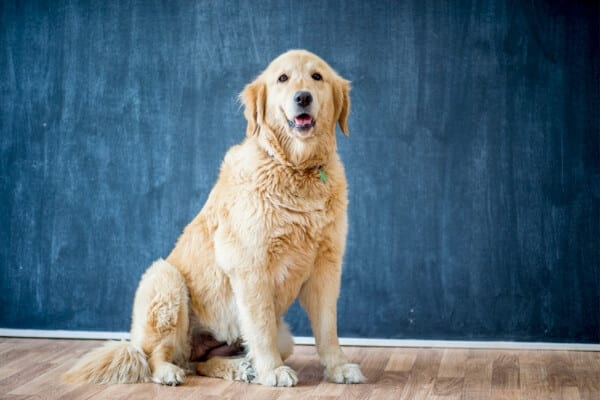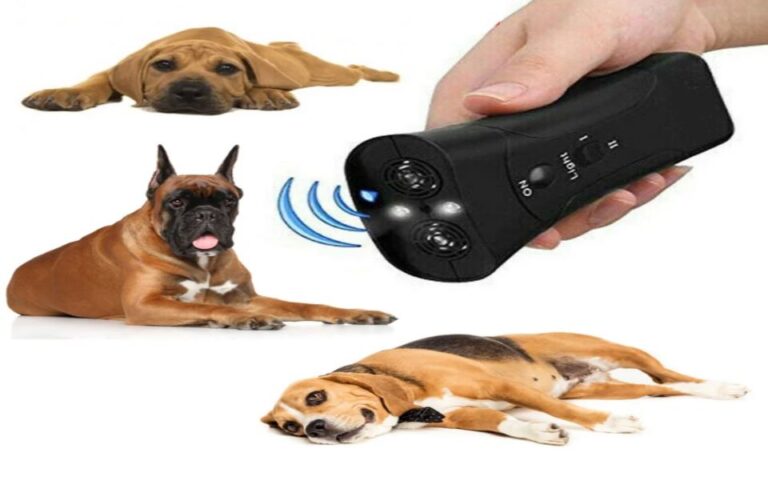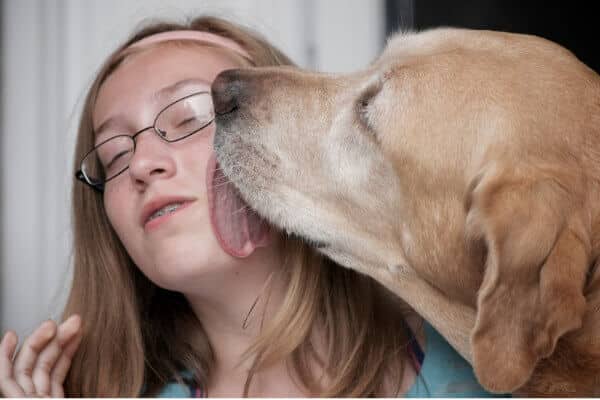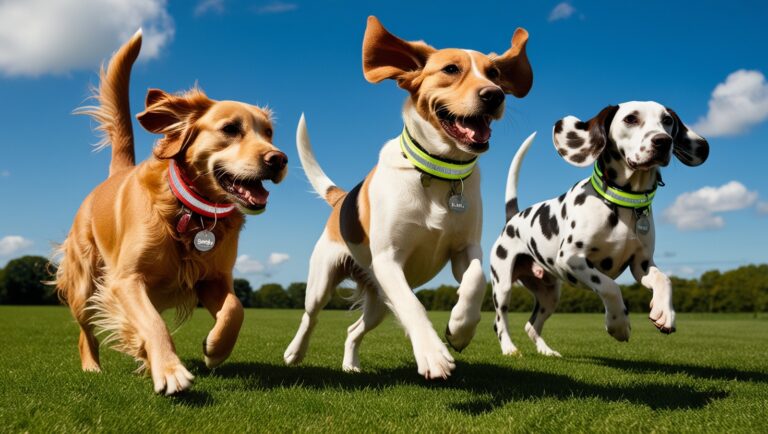Help! My Dog Is Scooting After Grooming (8 Reasons And Solutions)

You’ve just had your dog groomed, and they look adorable with their fresh cut and shiny coat. However, you notice something strange when you get home. Instead of prancing around showing off their new look, your dog is scooting across your living room floor, an action both amusing and bewildering.
When a dog scoots, it’s their way of dealing with an itch or discomfort, often located in the tail or anal region. Post-grooming, your dog might be scooting due to a range of factors including anal gland issues, potential irritation from grooming products, anxiety induced by the grooming experience, or grooming techniques that might have been a little too rough on your dog’s sensitive areas. Alternatively, the grooming session may have stirred up an underlying issue such as anal gland problems, which have now manifested as increased scooting behavior.
If you’re scratching your head and wondering, “Why is my dog scooting after grooming?”, This article seeks to shed some light on this quirky canine behavior and profer some solutions to the problem.
Why Is My Dog Scooting After Grooming?
Scooting, or the act of a dog dragging its rear across the floor, is a fairly common behavior in dogs and can be a response to a variety of different stimuli. While occasionally it might be simply a quirky habit, it could also be a sign of discomfort or a health problem. After grooming, there could be several reasons why your dog may scoot, including the following:
1. Razor or Clipper Burns
Sometimes, grooming can lead to razor burns or clipper burns. These are uncomfortable skin irritations caused by the groomer’s tools. Dogs with sensitive skin are particularly prone to this problem. If your dog experiences a burn, it may scoot in an attempt to alleviate the discomfort.
2. Anal Gland Impaction
Dogs have two small glands on either side of their anus, which can sometimes become blocked or impacted. These glands usually empty when a dog defecates, but if they become blocked, it can be painful and lead to scooting. Groomers may express these glands with their fingers to prevent impaction, but if not done properly, it can cause discomfort and thereby make your dog scratch his bum over the rug or carpet.
3. Infection of the Anal Sac
If the anal glands of your pooch as explained before become infected, it can cause discomfort and may lead to your dog scooting. Infections are usually signaled by other symptoms as well, such as redness, swelling, and foul smell.
4. Expressed Dog’s Anal Glands
Dogs’ anal glands usually empty when they defecate but if this doesn’t happen, groomers often express them during grooming by applying gentle pressure to the glands, causing them to release the fluid they contain. which can sometimes lead to temporary discomfort. This might cause the dog to scoot to try to alleviate the uncomfortable sensation.
5. Grooming Injuries
Unfortunately, sometimes dogs can get injured during grooming. This could be from a slip of the scissors, rough handling, or even stress-related injuries from struggling. If your dog has an injury post-grooming that’s causing discomfort, they might scoot to relieve the pain.
6. Irritation
Even if there’s no visible injury, the grooming process might cause some aftermath irritation, especially if your dog has sensitive skin. He might scoot to try and soothe the irritation.
7. Your Dog Is Traumatized
Grooming can be a stressful experience for some dogs, particularly if they’re not used to it or if they’ve had bad experiences in the past. The stress and anxiety from grooming might cause your pooch to scoot after a grooming session.
8. Allergic Reaction
Some dogs are just allergic to the grooming products used, such as shampoos, conditioners, or even the material of the grooming tools. If your dog is having an allergic reaction, it might scoot in response to the itchiness or discomfort.
If your dog is scooting after grooming, it’s essential to identify the root cause so you can address it. Watch for additional symptoms and consider seeking veterinary advice.
What To Do If Your Dog Is Scooting After Grooming?
When your dog starts scooting after grooming, understanding the causes, possible remedies, and when to seek veterinary help is vital for your pet’s health and comfort.
1. Keep An Eye On Your Dog
When your dog has been groomed, it’s normal for them to behave a little differently due to the unfamiliar sensation. However, if you notice your dog scooting—that is, dragging it behind on the floor or grass—this could be a sign of discomfort.
Scooting can be occasional or frequent, and both scenarios warrant attention. Keep an eye on the frequency and intensity of the scooting behavior. If it’s frequent and appears to cause distress, it could be due to irritation or an allergic reaction to the grooming products used.
Also, look for signs of redness, swelling, or any unusual secretions in the area. You should also monitor their general behavior, as changes in eating habits, lethargy, or unusual aggression could be signs of discomfort.
2. Gather Necessary Information
Once you have identified that your dog is scooting post-grooming, it’s important to collect as much information as possible. This can help determine whether the scooting is due to a health issue or a reaction to the grooming process.
Make a note of the frequency of scooting, any changes in your dog’s behavior, and when these changes started to occur in relation to the grooming.
Reach out to your dog groomer and ask about the process they followed during the grooming session. Did they notice anything unusual about your dog? What products did they use? Your dog may be allergic or sensitive to certain ingredients in grooming products, causing irritation and prompting the scooting.
3. Consult Your Vet
After you’ve gathered all the necessary information, it’s crucial to consult your vet. Share all your observations, including the details about the grooming session, the products used, and your dog’s behavior afterward.
Even though your groomer is knowledgeable about many aspects of dog health, only a vet can diagnose medical issues. Your vet will likely perform a physical examination to check for any physical causes for the scooting, such as anal gland problems or skin infections. They might also ask about your dog’s diet and run tests to rule out parasites or other underlying health issues.
Depending on the diagnosis, treatment might involve medication, changes in diet, or using different grooming products.
Note that it’s always important to respond swiftly when you notice changes in your pet’s behavior. By keeping a close eye on your dog, gathering relevant information, and consulting with your vet, you can ensure that your pet remains healthy and comfortable.
Home Remedies For Dog Scooting
While severe cases should always be assessed by a vet regarding dog scooting, there are some home remedies you can try if your dog is scooting.
1. Remedy For Anal Gland Problems:
When a dog’s anal glands are full or impacted, they can cause discomfort, leading to scooting. Some home remedies include:
High-Fiber Diet
Increasing your dog’s fiber intake can help bulk up their stools, which can naturally help express the anal glands. Add canned pumpkin (not pumpkin pie mix), sweet potatoes, or a fiber supplement to your dog’s meals.
Warm Baths
A warm bath can help soothe your dog’s discomfort and potentially help to naturally express the anal glands. Remember to make the experience as stress-free as possible for your dog.
2. Remedy For Parasites
If parasites such as worms or fleas are causing your dog to scoot, there are some natural preventatives you can try:
Regular Flea and Worm Treatment
Many natural flea and worm treatments are available, including ones that use ingredients like diatomaceous earth. Always check with your vet before starting a new treatment regimen.
Proper Hygiene
Regularly clean your pet’s bedding and maintain a clean environment to keep parasites at bay.
3. Remedy For Allergies
Just like humans, dogs can also suffer from allergies which can lead to scooting. This might be due to food or environmental factors.
Identify the Allergen
Try to identify the cause of the allergy. This might require a process of elimination, such as changing your dog’s diet or removing potential allergens from their environment.
Anti-Itch Oatmeal Bath
Giving your dog a soothing oatmeal bath can help alleviate itching and irritation caused by allergies.
4. Remedy For Digestive Issues
Digestive issues like diarrhea or constipation can also lead to scooting.
Probiotics
Probiotics can help balance your dog’s gut bacteria, leading to better digestion and potentially less scooting.
Hydration
Ensure your dog always has access to clean water. Dehydration can exacerbate digestive issues.
Remember, these home remedies may help alleviate your dog’s symptoms, but they should not replace a visit to the vet, especially if the symptoms persist or worsen.
.
Final Thoughts
Dog scooting after grooming can be a cause for concern, but sometimes, it is not always a sign of a severe problem. It could merely be a temporary discomfort or irritation due to the grooming process itself, or it may indicate an underlying issue such as impacted anal glands, parasites, allergies, or infections.
Regardless, the best course of action is to keep a close eye on your dog’s behavior. If the scooting persists for more than a day or two, or if it is accompanied by other symptoms such as loss of appetite, changes in behavior, or signs of pain, consult your veterinarian immediately.
While grooming is crucial to your dog’s overall health and well-being, it’s also critical to remember that it should never result in ongoing discomfort for your pet. Work with a trusted groomer who is knowledgeable and considerate of your dog’s needs. Regular grooming should be combined with other aspects of preventative healthcare, such as regular vet checks and a healthy diet. By doing so, you can ensure that your dog is not just looking their best, but feeling their best too.
Read related posts about





